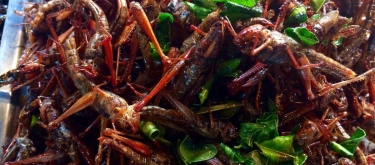Cracker: Taste Profile, Aroma, Benefits and Health Risks
Crackers are thin, crisp baked snacks made from flour, water, and salt, sometimes enriched with oil, seeds, or herbs. Originating from ancient flatbreads, they evolved into versatile snack foods found worldwide. Crackers are enjoyed plain, with cheese, spreads, or dips, and play a key role in appetizers, catering, and light meals.
Crackers commonly contain gluten and may include dairy, soy, or sesame depending on the recipe. Gluten-free and vegan options exist. People with celiac disease or gluten intolerance should avoid wheat-based crackers. Excess sodium in commercial varieties can raise blood pressure. Pregnant women can safely consume baked crackers if moderate in salt and additives.
What does Cracker taste like?

Complete Sensory Description
-
Taste: The first bite delivers a gentle saltiness and toasted grain flavor. On the mid-palate, buttery or nutty tones emerge, especially in richer varieties. Whole-grain crackers show earthy depth, while plain ones remain mild and clean. The finish is lightly savory with a hint of sweetness from baked starches.
-
Aroma: Retronasal aroma recalls freshly baked bread, subtle butter, and roasted flour. Seeded crackers may add nutty and aromatic complexity.
-
Texture: Thin, crisp, and brittle. Good crackers break cleanly with a dry, delicate crunch. Variants with oil or seeds offer more crumble and chew.
-
Appearance: Golden to pale beige, with small perforations or visible toppings like salt, sesame, or herbs.
In-depth Flavor Analysis
Cracker flavor develops through Maillard browning and lipid oxidation during baking:
-
Key compounds:
-
Pyrazines → roasted, nutty, baked notes
-
Furfural and maltol → sweet, caramelized aroma
-
Lipid-derived aldehydes → toasty and savory nuances
-
-
Processing effects:
-
Higher baking temperature intensifies roasted character.
-
Use of butter or oil increases richness.
-
Whole grains raise complexity via bran volatiles.
-
-
Flavor levers: Adjusting bake time and fat content changes crispness and depth; salt enhances flavor perception without increasing sweetness.
Varieties and Culinary Applications
-
Varieties:
-
Saltine crackers: light, salty, neutral.
-
Butter crackers: rich and smooth.
-
Whole-grain crackers: earthy and fibrous.
-
Seeded crackers: aromatic and texturally complex.
-
-
Culinary Applications: Paired with cheese, pâté, hummus, or smoked fish; used as bases for canapés; crushed for crusts and breading.
Selection and Storage
-
Selection: Choose crackers with even golden color and no burnt edges. Avoid overly dry or stale texture.
-
Storage: Store in airtight containers away from humidity. Once opened, reseal to preserve crispness; refrigerate seed-based crackers to prevent rancidity.

Nutritional Insights
Crackers provide carbohydrates and small amounts of protein and fiber. Whole-grain or seed-enriched versions supply minerals (iron, magnesium) and healthy fats. Excessive intake of refined crackers may contribute to sodium and calorie overload.
Expert Insights & Culinary Tips
Chefs often use crackers as a neutral flavor platform to highlight toppings. Butter crackers pair well with mild cheese; whole-grain ones suit sharp cheddar or smoked salmon. Toasting stale crackers for a few minutes can revive crispness.
Interesting and Curious Facts
Crackers were originally developed as long-lasting travel food for sailors. The name “cracker” comes from the sound they make when broken. Modern varieties trace back to 19th-century innovations like soda crackers and cream crackers.
Harm and Dietary Considerations
-
Excess sodium may elevate blood pressure.
-
Refined flour crackers offer little fiber.
-
Added fats increase caloric density.
-
People with celiac disease must avoid gluten-containing varieties.
Religious Dietary Considerations
-
Islam: Halal if free from animal fats or alcohol-derived flavorings.
-
Judaism: Kosher-certified options widely available.
-
Christianity: No restrictions.
-
Hinduism & Buddhism: Acceptable if vegetarian.
Final Thoughts & Sensory Journey
Crackers exemplify simplicity turned into refinement: light, crisp, and subtly aromatic. Their balanced flavor allows endless pairing, making them one of the most adaptable snacks in global cuisine.
Resources
-
Coultate TP. Food: The Chemistry of Its Components. Royal Society of Chemistry, 2016. ISBN: 9781782626483
-
McGee H. On Food and Cooking: The Science and Lore of the Kitchen. Scribner, 2004. ISBN: 9780684800011
-
Belitz HD, Grosch W, Schieberle P. Food Chemistry. Springer, 2009. ISBN: 9783540699330





